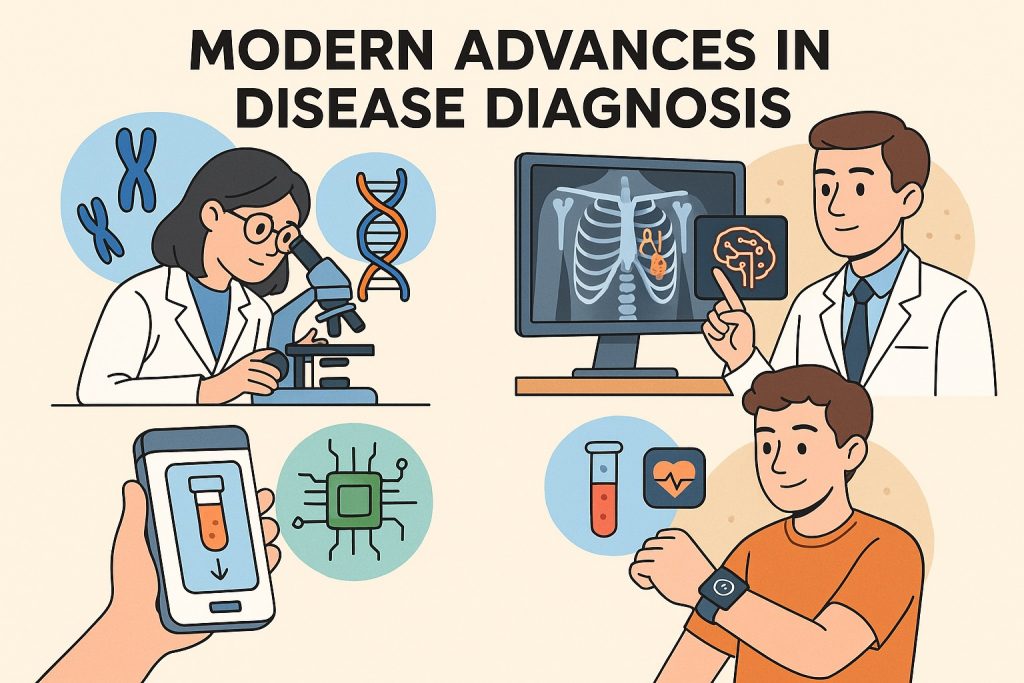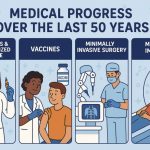Modern medical diagnostics is experiencing a transformative shift driven by cutting-edge technologies, precision medicine, and artificial intelligence. These innovations aim to detect diseases earlier, improve accuracy, and tailor treatment strategies for each patient.
Precision Diagnostics: Targeting at the Molecular Level
One of the most significant advancements is precision diagnostics, which involves identifying diseases at the genetic and molecular level. This approach enables the detection of cancer, autoimmune conditions, and genetic disorders even before symptoms appear. Techniques such as next-generation sequencing (NGS) can analyze DNA in hours, making personalized treatment plans more feasible than ever before.
Artificial Intelligence and Machine Learning in Diagnosis
AI has revolutionized diagnostics by analyzing vast amounts of medical data. Machine learning algorithms can detect patterns in imaging (X-rays, MRIs, CT scans) with high accuracy, sometimes surpassing human experts. For example, AI-assisted diagnostics are now commonly used to detect diabetic retinopathy, skin cancer, and early-stage lung cancer with impressive precision.
Lab-on-a-Chip and Portable Devices
Miniaturized diagnostic tools such as lab-on-a-chip devices are bringing diagnostics out of the lab and into remote or home settings. These devices can perform blood, saliva, or urine tests using microfluidic channels and provide results within minutes. They are especially useful in rural areas or during disease outbreaks when fast testing is critical.
Liquid Biopsy: A Game-Changer for Cancer
Liquid biopsies are non-invasive tests that detect cancer biomarkers from a simple blood sample. They are increasingly used to monitor cancer progression, detect recurrence, and even guide treatment decisions. Compared to traditional biopsies, they reduce discomfort and offer faster insights into how the disease is evolving.
Real-Time Infectious Disease Detection
Rapid detection of infectious diseases is more critical than ever. Technologies like CRISPR-based diagnostics and isothermal amplification can identify viruses like COVID-19, flu, or even Zika within minutes. These methods offer speed and specificity, making them ideal for large-scale testing during pandemics.
Wearable Diagnostic Technologies
Wearables have evolved from step counters to sophisticated health monitors. Smartwatches and patches now track heart rate variability, blood oxygen levels, and even irregular heart rhythms. These devices enable continuous health monitoring and can alert users and doctors to potential problems before they become severe.
Challenges and Future Directions
While diagnostic technologies are advancing rapidly, challenges remain. These include ensuring data privacy, managing false positives, and making technologies accessible and affordable globally. The future promises even more integration between AI, genomics, and personalized health monitoring—moving healthcare from reactive to truly preventive.
Glossary
- Precision diagnostics: Diagnosing diseases using molecular and genetic information specific to an individual.
- Next-generation sequencing (NGS): A technology that quickly reads large amounts of DNA.
- Machine learning: A form of artificial intelligence where computers learn from data patterns.
- Lab-on-a-chip: A small device that can perform laboratory tests on a single chip.
- Liquid biopsy: A blood test that detects cancer DNA or other markers.
- CRISPR-based diagnostics: A gene-editing technology used to detect viruses and bacteria quickly.
- Wearables: Smart devices worn on the body to monitor health in real-time.


